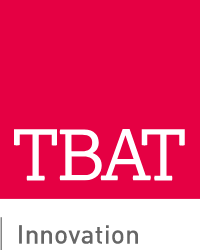


Yasmin Dalton
Consultant
For those familiar with R&D tax credits, the Corporate Intangibles Research and Development Manual (CIRD) is a key resource for understanding HMRC’s approach to R&D tax relief. One important section of that manual, CIRD80300, has recently been updated. While the changes may seem subtle, they reflect HMRC’s ongoing efforts to modernise and streamline how R&D claims are handled.
CIRD80300 serves as the introduction and roadmap to HMRC’s guidance on R&D tax relief. It’s the page that helps taxpayers and HMRC officers find their way around the manual and provides direction on who to contact for help with claims. It shows where to go for the rules on qualifying expenditure, SME versus large company schemes, and even anti-avoidance guidance.
Essentially, this section is the “table of contents” for the R&D relief framework, guiding readers through the detailed structure of the manual. For businesses making R&D claims, understanding this layout can make a real difference in identifying the right criteria, evidence, and references to support a robust submission.
The most significant change is how HMRC directs taxpayers and agents to make contact about R&D tax claims.
Centralised contact process
Previously, companies were asked to contact their local R&D Specialist Unit, with cases allocated by postcode. The new version replaces that system with a single point of contact: RD.IncentivesReliefs@hmrc.gov.uk
This move to a centralised email address simplifies communication and helps ensure that queries are handled consistently across the UK. It also reflects HMRC’s broader move toward standardisation in R&D claim handling.
Centralising the point of contact also helps HMRC monitor query volumes, identify common issues, and respond more efficiently to trends across sectors. This could be particularly helpful given the increased number of R&D tax credit claims and the growing complexity of projects involving software, AI, and other emerging technologies. It also ensures that businesses and agents are getting up-to-date and consistent information, reducing the risk of regional discrepancies that sometimes arose under the old system.
There are also a few behind-the-scenes updates.
These adjustments reflect HMRC’s internal reorganisation and updated naming conventions.
Despite the updates, the structure and content of CIRD80300 remain largely the same. The manual still guides readers through the main areas of R&D tax relief, including:
It also confirms that capital expenditure is not eligible for R&D tax relief, which continues to be covered separately under CA60000 onwards.
Although the updates may appear administrative, they align with HMRC’s wider efforts to improve the consistency and efficiency of R&D tax relief administration. A centralised contact process allows HMRC to:
For companies and advisers, this should mean clearer communication and potentially smoother resolution of R&D tax queries.
The change also reflects HMRC’s growing emphasis on quality and compliance. As HMRC increases scrutiny of R&D tax credit submissions, businesses are expected to provide clearer evidence and more technical justification for their claims. Having a single point of contact ensures that queries are handled in line with current policy and helps prevent conflicting advice or misinterpretation of R&D eligibility criteria.
From a practical perspective, this centralisation could also improve turnaround times on claims and enquiries. With a dedicated team handling R&D communications, responses should be more consistent and targeted, supporting businesses that are trying to plan cash flow or manage expectations around R&D tax credit payments.
CIRD80300 sits at the start of the R&D tax relief guidance and serves as a gateway to a range of important topics. These include the definition of R&D (CIRD81300), the types of eligible expenditure such as staff costs and software, and the distinctions between the schemes.
Understanding how this section fits into the wider manual can help businesses and advisers stay compliant, particularly given the ongoing evolution of R&D tax relief and the introduction of measures like the merged R&D scheme and Additional Information Form (AIF).
The new version of CIRD80300 may not be a major rewrite, but it signals HMRC’s continued move toward a more streamlined and modern R&D tax relief process. The replacement of the postcode-based contact system with a single national contact point should make communication easier and more consistent.
For businesses claiming R&D tax credits, it is essential to ensure you are referencing the most recent guidance and using the correct contact routes. Outdated contact details or references could delay your claim or cause unnecessary confusion. Regularly reviewing the CIRD manual, alongside HMRC’s published updates, should form part of every adviser’s or finance team’s compliance routine.
Read the full guidance: CIRD80300 – R&D tax relief: introduction: help points and further guidance – HMRC internal manual – GOV.UK
Please get in touch with our TBAT team today if you would like help understanding the information provided in any of the Corporate Intangibles Research and Development Manuals.